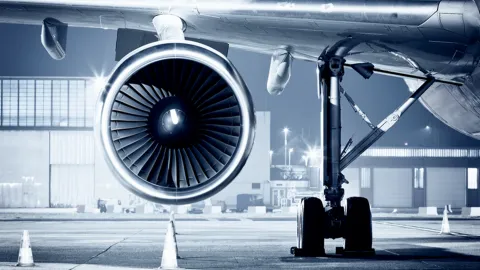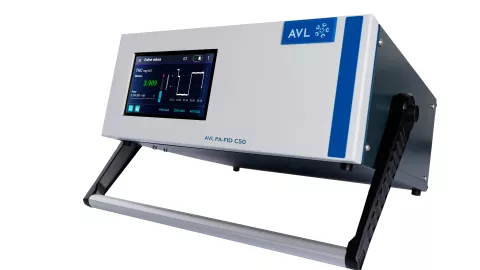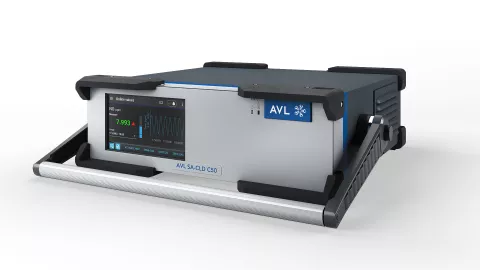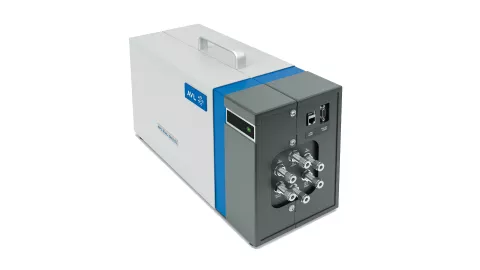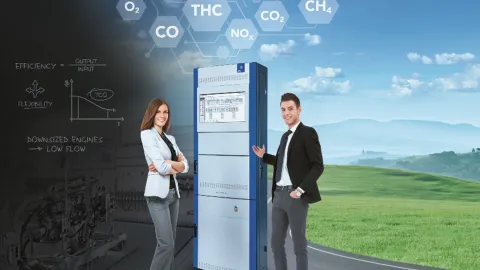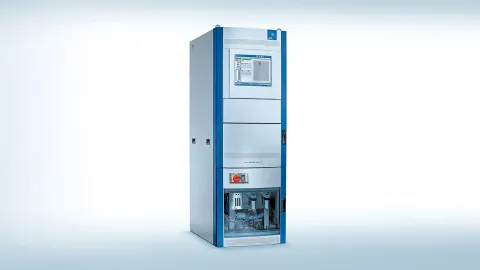With the advancement of technology, there are new challenges in emissions measurement in the aviation industry today:
- More stringent emission regulations
- Testing of alternative aviation fuels
- Taking representative samples from turbo fan engines
- Meeting response factors for HC measurement
If you want to determine low emissions precisely, robust gas analytical solutions and the knowledge of AVL experts will help you to overcome these challenges.

Gaseous Emission Measurement
International Civil Aviation Organization (ICAO) Annex 16 regulates the emissions certification of aircraft engines regarding gaseous emissions and smoke. Beside the fact that taking representative samples from jet engines is a challenging task, Annex 16 specifies different and hard to meet response factors for the Flame Ionization Detector (FID) that are very different from those used in automotive applications. In addition, gaseous emissions of nitrogen oxides (NOx), carbon monoxide (CO) and carbon dioxide have to be determined.
AVL offers a wide range of accurate gas analytical solutions for single and multi-component emission analysis e.g.:
- Portable and rack-mounted FID analyzers for THC measurement
- Portable and rack-mounted CLD analyzers for NO/NOx measurement
- NDIR analyzers for CO and CO2 measurement
- AMA exhaust gas measurement systems hosting multiple analyzers
- Stationary and portable FTIR-based multi-component exhaust gas measurement systems
- Calibration equipment like a gas divider for analyzer verifications
- Calibration services to ensure the quality and reliability
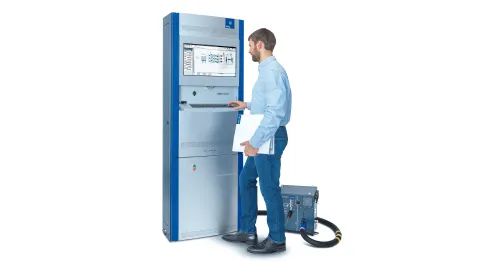
Particulate Matter Measurement
In addition to gaseous emissions, the ICAO also introduced non-volatile particulate matter (nvPM) mass and number standards. AIR6241 (Aircraft Information Report) requires manufacturers of turbojet and turbofan engines with >26.7 kN thrust to report the nvPM mass and number emission indices (EI) and describes the instrumentation and the measurement protocol.
To keep testing efforts consistent with previous requirements, the standard facilitates simultaneous measurement of the nvPM number and mass with the Gas Transfer System (GTS) for the measurement of the smoke number and gaseous emissions as specified in Annex16.
An AIR6241 compliant nvPM Measurement System consists of a customer specific collection section comprising of the sample probe and a connection line and a tansfer section. The AVL Particle Measurement System (PMS) Aviation consists of:
- AVL Particle Sampling System Aviation (PSS Aviation)
- AVL Micro Soot Sensor Aviation (MSS-Aviation)
- AVL Particle Counter Aviation (APC-Aviation)
- AVL System Control Software Aviation (SCS Aviation)
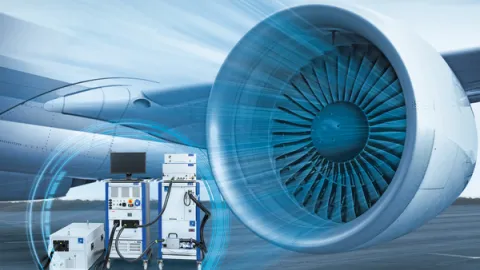
Flexible Analytical Solutions
- Portable and rack-mounted versions of analyzers for THC and NOX measurements
- Most compact AMA SL exhaust measurement systems that fit even in the smallest spaces
- Versatile FTIR-based analyzers that may be equipped with additional analyzers
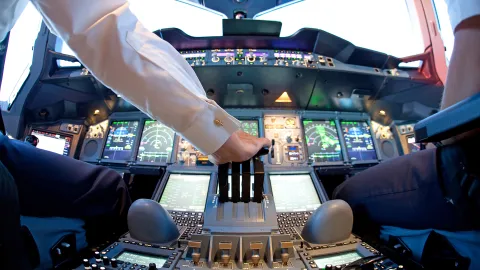
Compliance
Meeting the stringent response factors for HC measurements according to ICAO Annex 16.
Low Cost of Ownership
Avoiding operation gases like synthetic air for FID, pure O2 for CLD, and no liquid N2 for FTIR analyzers.
Maximized Usability
Easy setup and handling of portable analyzers in even most challenging and hard-to-reach locations.
Easy Operation
Stay connected anywhere & anytime thanks to web-interface operation.
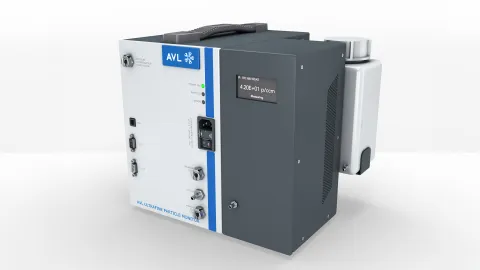
AVL UltraFine Particle Monitor
The AVL UltraFine Particle Monitor™ is designed to measure the particle number concentration of ultrafine particles for air quality monitoring by using condensation particle counter technology.
